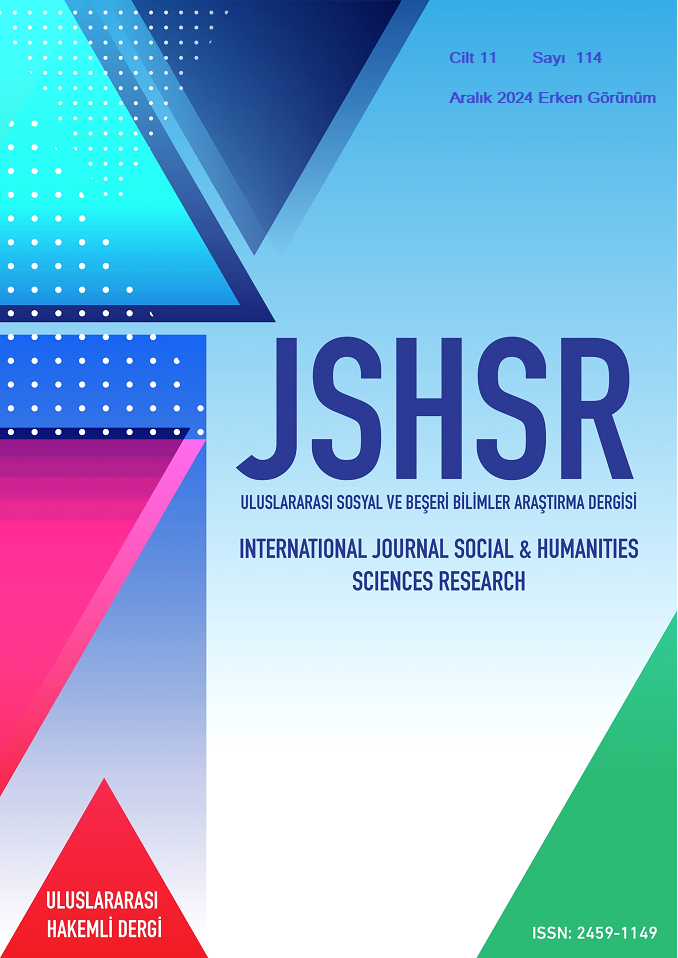The Impact of Classroom Team Leadership on Motivation, Communication and Collaboration
DOI:
https://doi.org/10.5281/zenodo.14579752Keywords:
Classroom Team Leadership, Student Motivation, Communication, Collaboration, PLS-SEMAbstract
This study aims to evaluate the impact of instructors' classroom team leadership approaches on students' motivation, communication, and collaboration. Designed as a quantitative study, the research was conducted with 182 associate and undergraduate students studying or graduated from universities in Turkey. Within the scope of the study, the effects of instructors' team leadership approaches on students were analyzed using the Partial Least Squares Structural Equation Modeling (PLS-SEM) method. The findings reveal that the team leadership approach of instructors positively influences students' motivation, communication skills, and collaboration competencies. Specifically, the results highlight the effective role of team leadership in enhancing classroom dynamics. These findings emphasize the importance of improving instructors' leadership skills to foster collaboration, effective communication, and increased motivation in students' learning processes. Furthermore, the study provides practical recommendations for designing training programs to develop instructors' leadership behaviors. The results demonstrate that instructors can enhance both individual and collective student success by exhibiting effective leadership in the classroom. In this context, the study is expected to offer both theoretical and practical contributions to the field of education.
References
Bass, B. M. (1990). From transactional to transformational leadership: Learning to share the vision. Organizational dynamics, 18(3), 19-31.
Creswell, J. W. (2014). Research design: Qualitative, quantitative, and mixed methods approaches (4th ed.). Sage Publications.
Çankaya, İ. H., & Karakuş, M. (2010). Okul yöneticilerinin takım liderliği davranışlarına yönelik bir ölçme aracı geliştirme çalışması. Kuram ve Uygulamada Eğitim Yönetimi (Educational Administration: Theory and Practice), 16(2), 167-183.
Cohen, J. (2013). Statistical power analysis for the behavioral sciences. routledge.
Colbeck, C. L., Campbell, S. E., & Bjorklund, S. A. (2000). Grouping in the dark: What college students learn from group projects. The Journal of Higher Education, 71(1), 60-83.
Fiedler, F. E. (1967). A theory of leadership effectiveness. McGraw-Hill.
Fornell, C., & Larcker, D. F. (1981). Evaluating structural equation models with unobservable variables and measurement error. Journal of Marketing Research, 18(1), 39–50.
Hackman, J. R., & Wageman, R. (2005). A theory of team coaching. Academy of management review, 30(2), 269-287.
Hair, J. F., Hult, G. T. M., Ringle, C. M., & Sarstedt, M. (2022). A Primer on Partial Least Squares Structural Equation Modeling (PLS-SEM) (2nd ed.). Sage Publications.
Henseler, J., Ringle, C. M., & Sarstedt, M. (2015). A new criterion for assessing discriminant validity in variance-based structural equation modeling. Journal of the Academy of Marketing Science, 43(1), 115–135.
Karasar, N. (2024). Bilimsel araştırma yöntemi: Kavramlar, ilkeler ve teknikler. Nobel Akademik Yayıncılık.
Keating, K., Rosch, D. M., & Burgoon, L. (2014). Developmental readiness for leadership: The differential effects of leadership courses on creating “ready, willing, and able” leaders. Journal of Leadership Education, 13(3), 1–16.
Kozlowski, S. W., & Ilgen, D. R. (2006). Enhancing the effectiveness of work groups and teams. Psychological science in the public interest, 7(3), 77-124.
Leithwood, K., & Jantzi, D. (2005). Transformational leadership. The essentials of school leadership, 31, 43.
Northouse, P. G. (2016). Leadership: Theory and practice (7th ed.). Sage Publications.
Nunnally, J. C. (1978). Psychometric Theory (2nd ed.). McGraw-Hill.
Ringle, C. M., Wende, S., & Becker, J.-M. (2024). SmartPLS 4. Bönningstedt: SmartPLS, https://www.smartpls.com.
Rosch, D. M. (2015). Effects of classroom-based team experiences on undergraduate student leadership development: When practice does not make perfect. Journal of Leadership Education, 14(3), 104–113.
Smith, K. A., Sheppard, S. D., Johnson, D. W., & Johnson, R. T. (2005). Pedagogies of engagement: Classroom-based practices. Journal of Engineering Education, 94(1), 87–101.
Yin, R. K. (2018). Case study research and applications: Design and methods (6th ed.). SAGE Publications.
Yukl, G. (2013). Leadership in organizations (8th ed.). Upper Saddle River, Prentice Hall.
Downloads
Published
How to Cite
Issue
Section
License
Copyright (c) 2024 INTERNATIONAL JOURNAL OF SOCIAL HUMANITIES SCIENCES RESEARCH

This work is licensed under a Creative Commons Attribution 4.0 International License.


